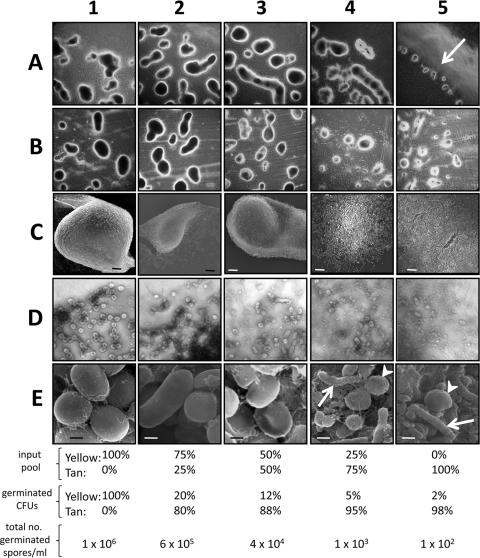Fig. 1.
Tan variants are capable of fruiting body formation and sporulation on agar surfaces. Appearances of fruiting bodies and their spores from mixtures of vegetatively growing cells containing different ratios of yellow and tan phase variants (input pools) are shown. Percentages indicate relative numbers of cells mixed together before the initiation of starvation-induced sporulation. (A) Fruiting bodies on the perimeters of 20-μl spots on TPM starvation agar. Spots of cells containing 100% tan variants resulted in fruiting bodies forming only at the periphery of the 20-μl spots (panel A5, arrow). (B) Fruiting bodies allowed to form on water agar plates containing E. coli prey. (C) SEM (magnification, ×1,000) of fruiting bodies from TPM agar plates. Bars, 10 μm. (D) Phase-contrast microscopy (magnification, ×1,000) of the edges of methylene blue-stained fruiting bodies scraped from the surfaces of TPM starvation plates. (E) SEM (magnification, ×30,000) of sonicated fruiting bodies from TPM agar plates. Bars, 0.5 μm. Heat- and sonication-resistant spores were allowed to germinate, and the resulting colonies were enumerated and scored for color. Percentages of germinated spores are averages of three experiments.

